Education
Dr. Vasudha Prakash, Founder V-Excel, Demystifies Inclusive Education
Inclusive Education in India deciphered by Dr. Vasudha Prakash, the founder of V-Excel Educational Trust.
Published
5 years agoon
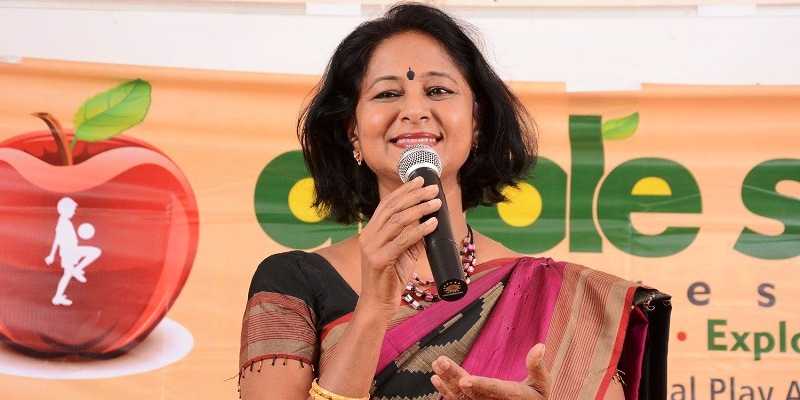
Inclusion works! This fact can be corroborated as soon as you step into the iconic Hotel Savera of Chennai and walk up to the reception. Arun Bhatia (name changed) who had been diagnosed with intellectual challenges at the age of 5, who struggled through the early years of school, whose education was attained in a special school, who was on medication for seizures for several years, and who according to everyone around him had no conceivable career possibilities ahead of him, will be the one to politely enquire how he can assist you.
Walk into one of the well-known schools of Chennai and you will find the easy camaraderie between two 12-year old friends, one neurotypical and the other with cerebral palsy, as the former pushes the latter’s wheelchair, chatting away all through quite naturally. A heart-warming and absolutely joyful sight to behold!
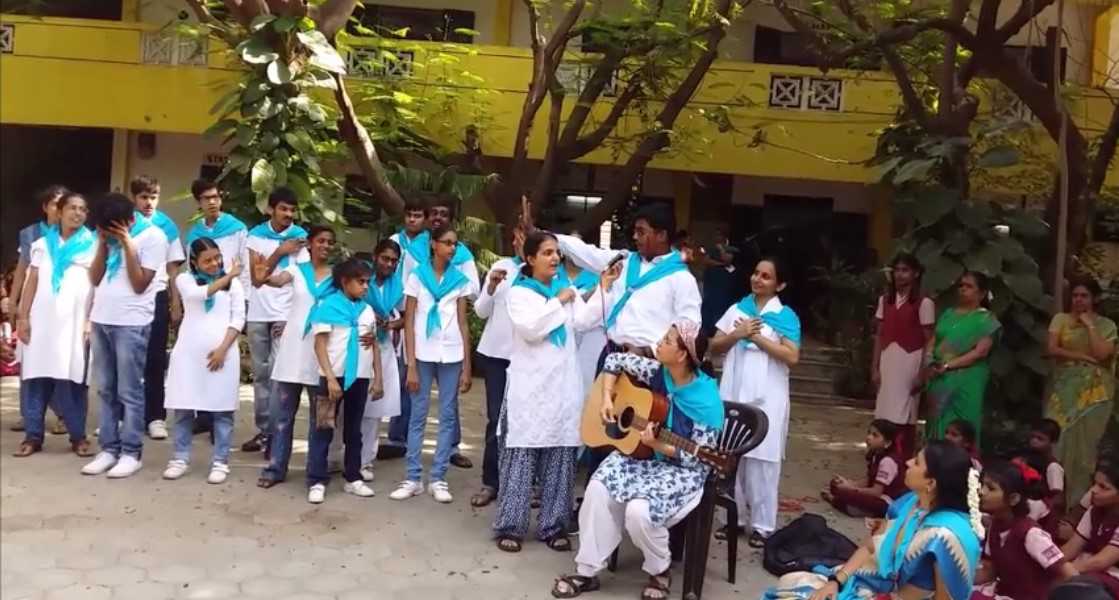
Inclusion is the natural organic state of life. Everyone, every life form is different and there is room for every creation in this world. And there is no such thing as equality – only equal opportunities. Why then is inclusion considered such a lofty concept? India of yore, rural India and the India which is still quite its free-flowing self, is inclusive by default. In large families, if there was a child lagging behind or quite different in his abilities, he would naturally be included, as best as his capabilities allowed, in everything that went on around him. There was no room for stigma or shame. He would have been looked after by the extended family. Schools had their own version of inclusion where the teacher would customize education for the child from whom there were minimum expectations.
Over-analysis and overthinking have become the bane of the modern world. The world of education, while it should ideally be reflecting life in its magnificence and preparing children for enhancing life’s gifts, goes about creating a parallel universe where realities have to be rediscovered as problems to be dealt with. No wonder children with special needs have to constantly prove themselves worthy of even their basic rights in this lopsided world.
Fast forward to the present times, and one finds that the whole idea of inclusion has become a scientific concept and a favourite subject of educational research. The practice of it, however, has not quite kept abreast with the academic and scientific furore.
INCLUSION AND OTHER RELATED NOMENCLATURES
With modern education going about its business with blinkers, homogeneity in the classroom was all that management, teachers and parents could process and fathom. Any heterogeneity of the student population was being treated as a novelty which required strategies instead of good old common sense.
University professors and research scholars came up with various gradations of inclusion and a separate terminology of the degree of inclusion. Below is a list of the terms:
- Mainstreaming: Mainstreaming, in the context of education, is the practice of placing students with special education services in a general education classroom during specific time periods based on their skills. To clarify, this means students who are a part of the special education classroom will join the regular education classroom at certain times which are fitting for the special education student. These students may attend art or physical education in regular education classrooms.
- Integration: Integration refers to exceptional students being partially taught in a mainstream classroom. Activities are adapted so the student can “fit in” with his mainstream peers while learning skills that may be better practised in a room with more age-appropriate peers. Integration supports student outcomes that include: improved social skills, exposure to typical classroom structure and curriculum, eased the transition to a mainstream class placement and exposure to educational content that is appropriately curated for interest and skill level. Integration is placing persons with disabilities in existing mainstream education without changing the system of education delivery. Many people mistakenly call this “inclusion” but unless the student receives the support needed, it is not.
- Segregation: Segregation occurs when students with disabilities are educated in separate environments (classes or schools) designed for students with impairments or with a particular impairment. It is most blatant when students with disabilities are forced to go to a school only for students with disabilities, but it also happens when students are educated in separate classes in a regular school. These are sometimes called resource classes.
- Exclusion: Exclusion occurs when students are denied access to education. Exclusion happens when students with disabilities are not permitted to register to attend a school, or when they register but are told not to come to school or when there are conditions placed on their attendance. Sometimes, students are registered but told they will receive their education from a teacher who will visit them at home – so effectively they are still excluded from school.
- Inclusion: Inclusion involves a transformation of the education system with changes and modifications in content, teaching methods, approaches, structures, strategies, and review mechanisms in place.
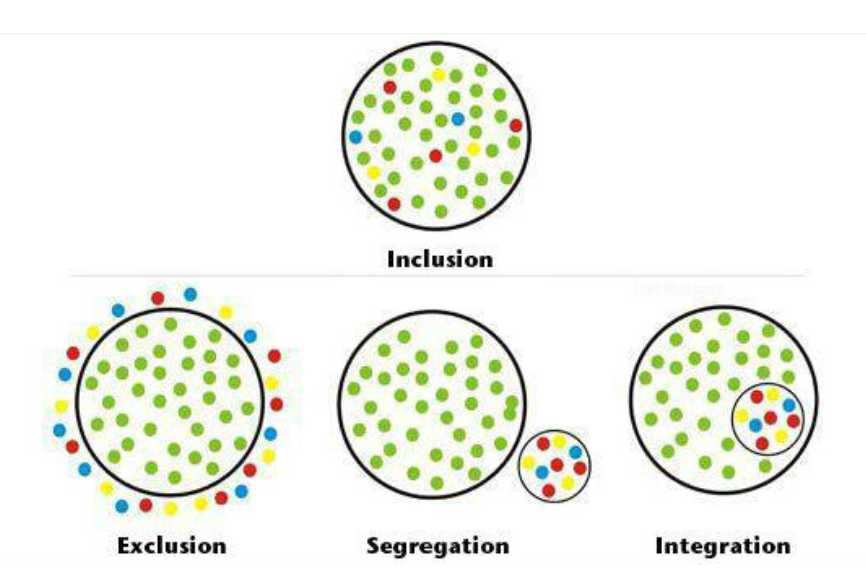
INCLUSION IN INDIA
The Indian education system is quite a complicated one with various boards enforcing their edicts on their subscribers. Each board has a different philosophy and practice as far children with disabilities are concerned. It does not help that the ministry governing education is different from the one administering disabilities. This misalignment in systems becomes a natural outcome of the ambiguity.
The other dissuading factor for inclusion of children with special needs is the difficulty level of the curriculum and the academic focus of the education system to the exclusion of anything organically developmental.
It is no wonder that the management, teachers and parents of regular children feel ill-equipped to admit children with varying abilities into the regular schooling system
So, the mindset is in complete contradiction with the laws of the land. Enactments such as the RTE, PwD, and the list of offerings for the disabled population do not find any resonance in the real practical world. Schools diplomatically turn away students with cognitive disabilities while colleges and workplaces have their own set of excuses.
However, there is still a silver lining in this. The country has seen a certain shift in the mindset of schools along with the teachers, thanks to the persistent and passionate efforts of professionals in the field of special education. There are wide recognition and intelligent acknowledgement of the fact that abilities and disabilities must be viewed in a spectrum paradigm. Every classroom will be a representation of the bell curve, with varying ranges of abilities and some severe cases. The philosophy of every school and every teacher should necessarily be to reach every student and leave no one behind.
Our organization, V-Excel Educational Trust, has been instrumental in facilitating inclusiveness in at least 100 schools in Tamil Nadu, through activity and practice-based workshops. We also keep a helpline open to the schools whose teachers trained with us, to support them through inclusion.
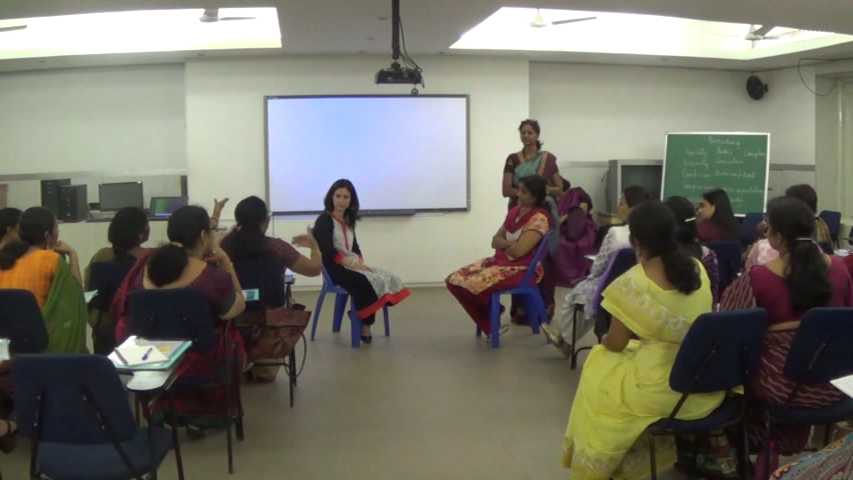
A PRACTICAL APPROACH TO INCLUSION
- Inclusion as a school Policy decision: The management team and board should convene and create a policy on inclusion which will address the following points:
- Total number of students to be included – minimum and maximum
- Number in each class
- Additional resources – special educators, therapists, counsellors
- Training programs for teachers and staff in preparation of inclusion
- Administrative and infrastructure readiness: Making sure that the building and classrooms have all the accommodations needed for educating PwDs in the building and to ensure that they have all the documentation, permissions, forms and formats.
- Parental communication: it is very important that the policy decision about inclusion should be communicated very lucidly and firmly to parents of regular children straight from the horse’s mouth. The message should be communicated clearly to the parents that this is not a negotiable decision. Workshops should be held for parents to enlighten them about the deep positive impact of inclusion on their neurotypical children. Values of empathy, helpfulness, humaneness are automatically imbibed in students when they interact with their differently-abled classmates.
- Preparing the regular students: The starting date of the academic year should be a week earlier for neurotypical students than for their inclusive counterparts. This week should be used to orient the students in welcoming their differently-abled classmates. The teacher’s activities should actually succeed in getting the students excited about inclusion, and making them feel privileged and special. Most of the activities should be aimed at activating a deeper value system of empathy, kindness and generosity of spirit. They should also be orienting students about how differences are a natural part of life and should not be shunned or feared. Examples of such activities are:
- Welcome letters for the special child
- “Say Hello to someone who…”
- “Getting to know you” (Name-tag)
- “Picture this” – A gallery of ideas (bookmarks, wall, directories)
- People Packages – Nice vs. Ordinary
- “Ready, set, go!” – Preparation for inclusion
- Name through movements
- Walk your own shoes
- (descriptions can be found online)
- Preparing the students with special needs: It is very important to prepare the inclusion student for this major transition no matter where he will be coming from. Children can handle anything if they are given a heads-up and are given proper directives and support. Children with special needs react strongly and with a great deal of stress and anxiety to new situations and unpredictable environmental conditions. They feel out of control of their lives and that creates negative associations. To provide appropriate counselling services, to help them become comfortable in their new environment would go a long way in sustaining inclusion. It would be a good idea to make several trips to the school before the school year commences so that the student becomes familiar and comfortable with the feel of the school. He can meet the non-teaching and custodial staff as well and start some interactions with the teachers. It might be a good idea to keep shorter timings during the first few weeks so that the routine and rhythm can be gradually set.
- Giving it time: Inclusion can take even two years for it to become aligned to the regular school’s program. But until the teachers and schools get a hang of it, the student may not get comfortable. Some schools may include co-teaching as a part of their inclusion methodology. In such cases, training the co-teachers, defining their roles and boundaries will have to be done with systematic precision. Otherwise, the confusion is bound to unsettle students.
- Supporting Special parents: Parents of children with special needs are the most vulnerable of all the stakeholders. Their emotions range from guilt and hopelessness to hope and expectations. They may be extremely anxious and ask incessant questions about the well-being of their child. They also may have questions about the academic parity for their children and want the teachers to challenge them more. The teachers will have to develop deep empathy and patience towards the parents and act as counsellors as well. The parents can be referred for professional counselling too.
- Orienting all teachers: All the teachers of the school, subject teachers and class teachers should be given the case files of the inclusion students so that there are no discrepancies or differences in the way the student is educated. There must be periodic reviews and workshops so that teachers’ challenges can be addressed and they continue to remain motivated participants in the inclusion paradigm.
- Non-teaching staff of the school: Interactions between students and teachers will be quite frequent with all the members of the school. Sensitivity and kindness must be instilled in all the staff members as a matter of living and working.
- Tone setting in the first week of school
- Building anticipation
- Building awe and reverence
- Special education strategies benefit everyone: There is a number of procedures and rules that have to be put in place in an inclusive classroom. A multimodal, multisensory method needs to be instated in as a part of the instructional process. A lot of consciousness must be brought into the pace of instruction, thoroughness and repetition of teaching. Attention to detail and clarity in communication is a must too. Movement, music, and cultural activities must become part of everyday activities. Sensory inputs and sensory integration activities must be interwoven into the program.

CURRICULAR ADAPTATION
An enormous amount of planning goes into working teaching work and the effort becomes even more imperative when there are children with special needs in the class. Adaptation of the curriculum is an integral part of the inclusive exercise. In an inclusive system, teachers should be trained to respond to different learning styles and present lessons in different ways so that all students can learn.
Curricular Adaptations are “changes permissible in educational environments which allow the student equal opportunity to obtain access, results, benefits, and levels of achievement.” Simply put, curricular adaptations allow students with disabilities to participate in inclusive environments by compensating for learners’ weaknesses.
There are two kinds of adaptations –
- Accommodations are used when the student is expected to learn the same curricular content. But the student may be taught in a different way or need changes in the environment. Accommodations are changes in teaching methods. It can include changes in; where you teach, who teaches, how you teach, how the student can respond, materials you use.
- Modifications are used when the student is expected to learn less or different curricular content. This could require the modification of assignments, tests, worksheets and other materials in the classroom.
LEAST RESTRICTIVE ENVIRONMENT (LRE)
The concept of LRE must necessarily prevail over all other considerations for inclusion to be successful. The terms least restrictive environment, inclusion, and mainstreaming are often used interchangeably. They are not, however, synonymous concepts. Least restrictive environment refers to the idea that while students with disabilities should be educated to the maximum extent appropriate with peers without disabilities, they still have the freedom to choose an educational setting that is least restrictive to them – whether in a special school or home-schooling. The LRE concept ensures that students with disabilities get access to a setting most comfortable and appropriate to them and one which ensures that they meet their potential in the most humane and positive manner.
(Dr Vasudha Prakash holds a doctorate in Special Education from Rutgers University, USA. She is the Founder-Trustee of V-Excel Educational Trust)
http://www.v-excel.org/about-us/who-we-are.php
You may like
-
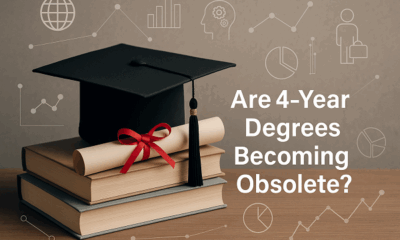

Are 4-Year Degrees Dead? Nikhil Kamath and the WEF Say Lifelong Learning Is Here to Stay
-
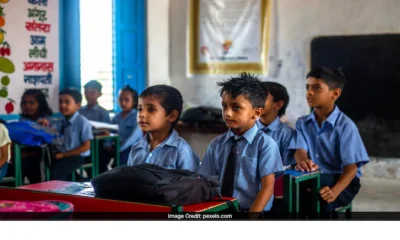

Delhi Schools to Implement Age 6 Rule for Class 1 Admissions from 2026
-


History, Identity, and Pride: Books That Make Sense of Being You
-
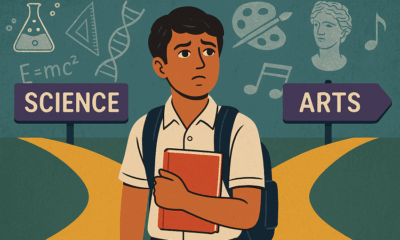

Of Formulas and Frames: Why India Must Stop Dividing Science and Art
-
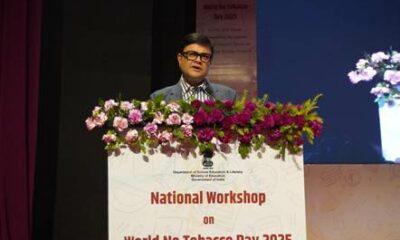

Education Ministry Launches National Drive for Healthier, Safer Schools
-
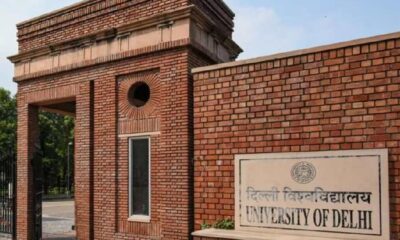

Curriculum Controversy at Delhi University: Academic Voices Clash Over Syllabus Overhaul
-
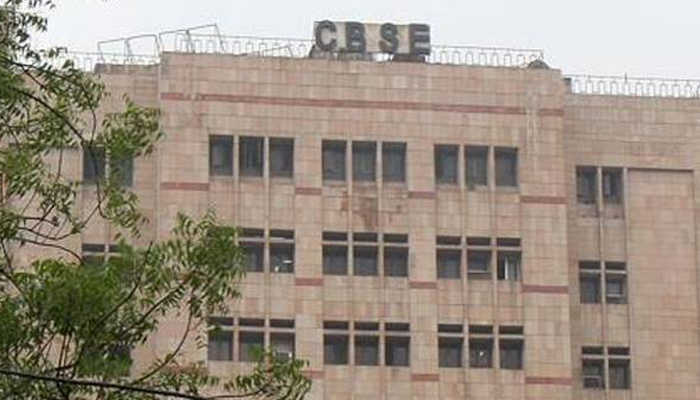

CBSE Directs Schools to Map Mother Tongues, Pushes for Multilingual Classrooms in Foundational Years
-
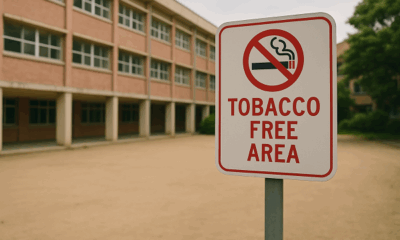

Ministry of Education Launches Month-Long Nationwide Drive to Make Schools and Colleges Tobacco-Free
-
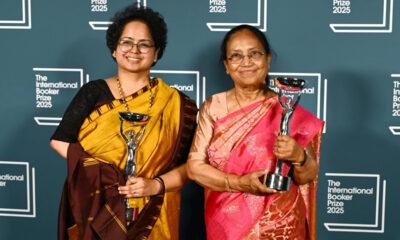

Banu Mushtaq’s International Booker Win Is a Wake-Up Call for Indian Schools to Reclaim Literature
-
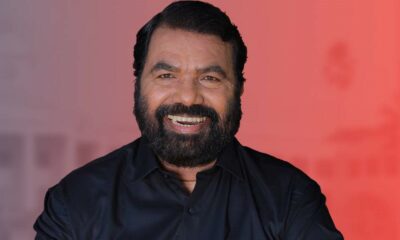

Kerala Reimagines Schooling: Social Awareness Over Syllabi in Bold New Reforms
Education
“We Sleep on Walls Here”: Shubhanshu Shukla Talks to Indian Students from Space
Published
1 day agoon
July 4, 2025
Astronaut Shubhanshu Shukla, currently stationed aboard the International Space Station (ISS), answered questions from schoolchildren during a live interaction hosted under ISRO’s Vidyarthi Samvad Program.
The session, designed to bring students closer to the realities of space science, turned into a heartwarming and humorous conversation about food, sleep, and the sheer wonder of viewing Earth from space.
When asked how astronauts sleep in zero gravity, Shukla smiled and explained: “There is no floor or ceiling in space. Some of us sleep on the wall, some on the ceiling. We have to tie ourselves down so we don’t float away while sleeping.”
The conversation became sweeter when Shukla revealed that he brought familiar Indian flavours with him into orbit. “I have carried gajar ka halwa, moong dal halwa, and mango juice with me from India,” he said, to the delight of the young audience. He clarified that the halwa was specially medicated for space missions, not made at home — a detail that sparked laughter and curiosity alike.
The astronaut also spoke about daily life aboard the ISS, including how exercise is essential to counter microgravity. “We ride bicycles here, but there are no seats. We strap ourselves in with belts,” he told the children, who were both fascinated and amused by the image.
For Shukla, however, the highlight of being in space remains the view of Earth. “That blue sphere, that light mist… seeing Earth from here is the most beautiful experience. It’s hard to describe in words.”
Addressing mental well-being, he shared how astronauts stay connected with their families. “Technology helps bridge the distance. We can talk to our loved ones, and that keeps us grounded — even when we’re not.”
Also present during the interaction was Group Captain Angad Pratap, a fellow member of the Gaganyaan mission crew, who encouraged students to consider careers in aviation and space science.
For many students, the session was a dream come true. “It felt like science fiction,” said one participant. “Now I believe I can go to space one day.”
As India continues its rapid progress in space exploration, conversations like these serve as reminders that inspiration is as critical as infrastructure — and that sometimes, a simple chat with an astronaut can launch the imagination of an entire generation.
Education
A Structural Proposal to Transform School Education in Bihar
Published
1 day agoon
July 4, 2025
In a recent public interaction, political campaigner and policy strategist Prashant Kishor detailed a long-term education plan aimed at overhauling Bihar’s school system. Emphasizing structural change over symbolic efforts, Kishor’s proposal focuses on centralized excellence, increased parental choice, and a phased financial roadmap over a 10-year period.
At the heart of the model lies a shift from quantity to quality. Rather than building one school in every village, the plan envisions five world-class government schools per administrative block, inspired by the legacy of the prestigious Netarhat Vidyalaya. These institutions would be open to students from all socioeconomic backgrounds, with Kishor stating that school buses and transport access would ensure that no child travels more than 20 minutes to reach school.
For families dissatisfied with local government schools, the model introduces an alternative: state-funded access to private education. If a student opts for a regulated private school nearby, the government would bear the cost. According to Kishor, this mirrors global best practices and provides an immediate quality option while public school infrastructure is being upgraded.
Contrary to the common belief that government education is cost-free, Kishor highlighted that Bihar currently spends an average of ₹850 per month per child in public primary schools. In comparison, many private institutions operate at a lower cost. “It’s not about public versus private. It’s about outcomes and value,” he stated.
The financing strategy involves a three-part allocation of the current education budget:
-
Building new elite schools (500 per year; 5,000 in 10 years)
-
Improving existing government schools
-
Funding private education for low-income students where needed
The total projected investment over a decade is ₹1 lakh crore.
The proposal has triggered a wider conversation around efficiency, equity, and the future direction of school education in under-resourced states. While it has been shared in a pre-election context, the structural detail and comparative lens make it notable for educationists and policymakers nationwide.
As the national education landscape continues to evolve post-NEP 2020, Bihar’s unfolding discourse offers a compelling case study on scalable, outcome-driven reform.
Education
NIIT Foundation and YuWaah, UNICEF Launch Free Online Digital Marketing Course for Youth
Published
2 days agoon
July 4, 2025
In a bid to support youth skilling in India, NIIT Foundation and YuWaah (a UNICEF India initiative) have jointly launched an Open Online Course in Digital Marketing as part of their #NayiDigitalDisha campaign.
The initiative has been rolled out in Rajasthan, Jharkhand, and Odisha and aims to reach 500 participants. The 8-week online program has been structured to be accessible to learners from underserved and remote areas. Upon completion, students will receive a credential assessed by NCVET and certified by NSDC.
The curriculum focuses on practical digital marketing skills including social media strategy, online customer sourcing, and campaign execution. Course development was led by NIIT Foundation, drawing on industry consultation and its prior experience in skill training.
According to the organisers, the goal is to provide industry-aligned learning opportunities to help learners secure employment and enhance their readiness for digital roles. Participants will receive certifications from both NIIT Foundation and YuWaah, UNICEF.
The program’s implementation coincides with India’s broader push towards a skilled workforce, aligning with national goals to build digital and job-readiness capacity by 2047. The digital learning initiative is part of a larger ecosystem supported by YuWaah that includes career guidance, leadership opportunities, and pathways to socio-economic participation for young people.
Earlier success stories, such as a student securing job placements after course completion, indicate emerging results; however, the course’s full impact is yet to be assessed as it progresses through its first implementation cycle.
Education
National Conference Pushes for Common Standards Across School Boards
Published
2 days agoon
July 4, 2025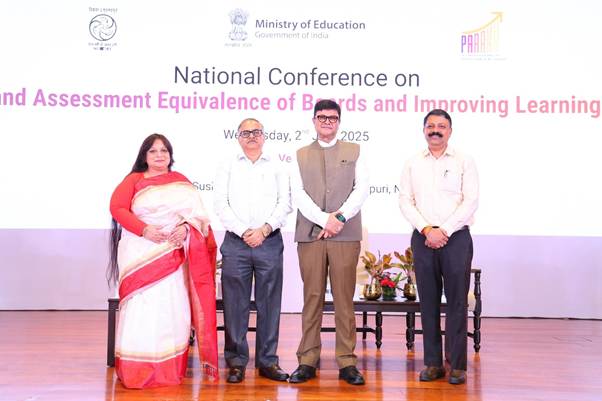
In a move set to impact India’s school education ecosystem, the Department of School Education and Literacy (DoSE&L), Ministry of Education, convened a high-level National Conference on Curricular and Assessment Equivalence of Boards and Improving Learning Outcomes at Sushma Swaraj Bhawan, New Delhi.
With over 250 senior officials from education departments, boards, SCERTs, and autonomous bodies like CBSE, KVS, and NVS, the conference reflected a coordinated push to align learning outcomes and assessment standards across India’s diverse schooling systems.
Chaired by DoSE&L Secretary Sanjay Kumar, the sessions explored how India can move toward competency-based education while ensuring fairness and flexibility for States/UTs. He emphasised that equivalence in curriculum and assessments is essential as India modernises its academic benchmarks in line with NEP 2020.
A key highlight was the launch of the PARAKH Rashtriya Sarvekshan Dissemination Portal, giving open access to national and state-wise data on student performance. The tool is designed to help States/UTs craft targeted improvement plans.
Prof. Indrani Bhaduri, CEO of PARAKH, also unveiled the findings from the 2024 National Survey, highlighting district-wise variations and prompting calls for data-driven, localised reform.
Best practices from six States/UTs — including Kerala, Punjab, UP, and Maharashtra — offered a practical lens on how systemic innovations can drive classroom-level change.
The conference also delved into board equivalence frameworks, with seven State Boards — including Andhra Pradesh, Assam, Goa, and J&K — presenting models for alignment of curricula, assessments, and evaluation standards.
CBSE Chairperson Rahul Singh spoke on school quality assurance, urging emphasis on self-evaluation and data transparency.
The conference spotlighted the School Quality Assessment and Assurance Framework (SQAAF) and called for the establishment of State School Standards Authorities (SSSA) in every State/UT.
Further, the session on vocational education equivalence underscored the importance of recognising school boards as vocational awarding bodies — a step towards seamless academic–skill integration and lifelong learning.
Ready Reckoner videos, Holistic Progress Cards (HPCs), and tools for continuous, child-centric evaluation were also introduced, aimed at embedding NEP’s vision in day-to-day school practice.
The event concluded with a collective reaffirmation: building an equitable, high-quality education system will require collaborative governance and commitment to learning for all.
Education
Maharashtra: Over 8,000 Villages Lack Schools, CCTV Compliance Still Patchy
Published
2 days agoon
July 3, 2025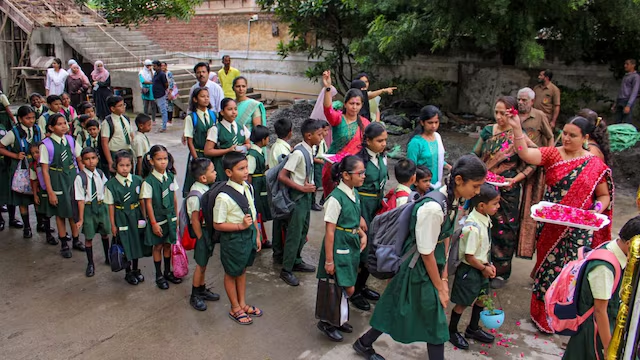
More than 8,600 villages in Maharashtra remain without a single school, according to a recent report by the state’s Women and Child Development Department.
The gap isn’t just in classrooms. Nearly half of all government schools in the state have failed to install CCTV cameras, despite a Bombay High Court directive issued over a year ago mandating the move for student safety.
The numbers come from an internal state government communication that has now surfaced publicly, raising concerns about Maharashtra’s compliance with both the Right to Education (RTE) Act and judicial orders.
While urban education garners attention with smart classrooms and NEP pilot projects, rural Maharashtra still contends with the fundamentals: no schools, no surveillance, and often, no real learning environment.
The CCTV issue, though seemingly minor, ties directly to concerns about student safety and teacher accountability, especially in government-run schools where complaints often go unaddressed. The High Court directive had explicitly asked for CCTV cameras to be installed in all government school premises. Yet, as per the report, only 53% of schools have complied so far.
Educationists and civil society groups have pointed out that the absence of schools in over 8,000 villages violates the RTE Act’s basic requirement of ensuring a primary school within a 1-km radius of every habitation. These gaps disproportionately affect students from marginalized communities who lack access to private schooling options or reliable transportation.
While the state has announced new digital initiatives and curriculum reforms, this data signals the urgent need for parallel investment in basic school infrastructure and safety mechanisms, especially in rural and tribal regions.
If Maharashtra is serious about achieving educational equity, the solution isn’t just in policy blueprints or digital dashboards — it’s in ensuring that every child has a safe, functional school to go to.
Education
Haryana to Offer Free After-School Coaching for JEE, NDA Aspirants
Published
2 days agoon
July 3, 2025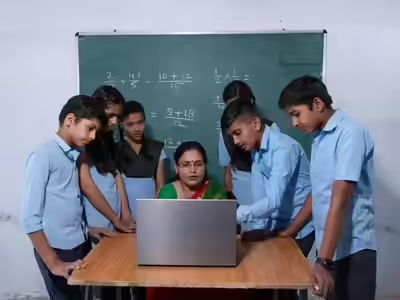
In a push to democratize access to competitive exams, the Haryana government has announced a free after-school coaching initiative for meritorious students in government schools. The scheme will initially roll out in 26 educationally backward blocks, targeting students aspiring to crack entrance exams like JEE (Joint Entrance Examination) and NDA (National Defence Academy).
The move is designed to level the playing field between private and government school students, many of whom lack access to the coaching ecosystem often necessary for success in high-stakes exams.
According to the Education Department, only those students who score above 60% in Class 10 and rank among the top 500 in state-level merit lists will be eligible for the coaching. The classes will be held in selected schools after regular hours.
Officials said that around 100 government school teachers have been identified to undergo training from expert faculty members from IITs and coaching institutions, ensuring quality instruction that mirrors national standards.
The initiative will be implemented in partnership with the national not-for-profit organization, the Rashtriya Avishkar Abhiyan, and aims to align with the broader goals of the NEP 2020 by enabling access, equity, and excellence in education.
By empowering students with structured coaching support—often inaccessible due to financial or geographic barriers—the Haryana government signals its intent to redefine what government schooling can offer in a competitive academic landscape.
Education
Telangana CM Calls for Overhaul of Intermediate Education in Telangana
Published
3 days agoon
July 3, 2025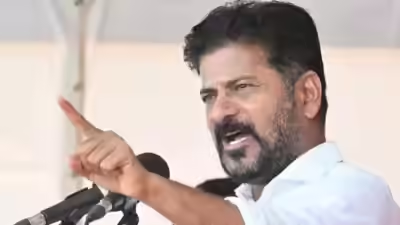
In a review meeting held at the Command Control Centre, Telangana Chief Minister A Revanth Reddy instructed education officials to take urgent steps to ensure students who complete Class 10 successfully transition into and complete their Intermediate education.
This directive stems from a persistent gap: while many students clear the Class 10 SSC board exam, a sizable number fail to complete the next academic stage. The CM has asked for a detailed study of the education policy for Classes 9 to 12 to identify where the system is failing and how it can be made more responsive to students’ needs.
Reddy emphasized that Intermediate education is a crucial link in helping students build careers and that adequate career guidance must begin at the college level. He directed officials to work on specific interventions to improve pass percentages in the intermediate board exams.
The review also touched on infrastructure: from proposing that every school fly a national flag to demanding regular updates on the construction progress of Young India Residential Schools. The CM expressed concern over the slow pace of infrastructure projects and instructed officials to accelerate tender processes, especially for the Veeranari Chakali Ilamma Mahila Vishwa Vidyalayam (Women’s University) expansion.
Funding was another key focus, with Revanth asking departments to coordinate with the Centre to ensure that Telangana receives its full share under centrally sponsored schemes.
The policy emphasis is clear: a push for a seamless Class 10 to Intermediate pipeline, improved exam outcomes, stronger infrastructure, and better career preparation for young learners.
Education
Indian Astronaut Shubhanshu Shukla to Connect with School Students Live from Space
Published
5 days agoon
July 1, 2025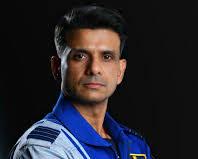
Indian astronaut Shubhanshu Shukla, currently on a 14-day scientific expedition aboard the International Space Station (ISS) as part of the Axiom-4 mission, is scheduled to interact with school students and ISRO engineers on July 4.
The communication will take place via ham radio, through a telebridge set up at the U R Rao Satellite Centre (URSC) in Bengaluru. The session is facilitated by the Amateur Radio on the International Space Station (ARISS) programme, which enables students to engage with astronauts in orbit.
The interaction is scheduled for 3:47 PM IST and will offer participating students an opportunity to ask questions directly to Shukla, who is joined on the mission by three other astronauts.
Shukla has been conducting various scientific experiments during his stay aboard the ISS. These include deploying and imaging space microalgae samples, which are being studied as a potential food source for long-duration missions. He has also participated in the Neuro Motion VR project — involving brain activity tracking through VR tasks in microgravity — and contributed to the Telemetric Health AI study, which uses biometric data and analytics to study cardiovascular and balance changes during spaceflight.
The Axiom-4 mission, organized by Axiom Space, focuses on scientific research in space with potential applications in both space exploration and Earth-based health systems.
Education
UGC Cracks Down on 89 Institutes Over Anti-Ragging Failures
Published
6 days agoon
June 30, 2025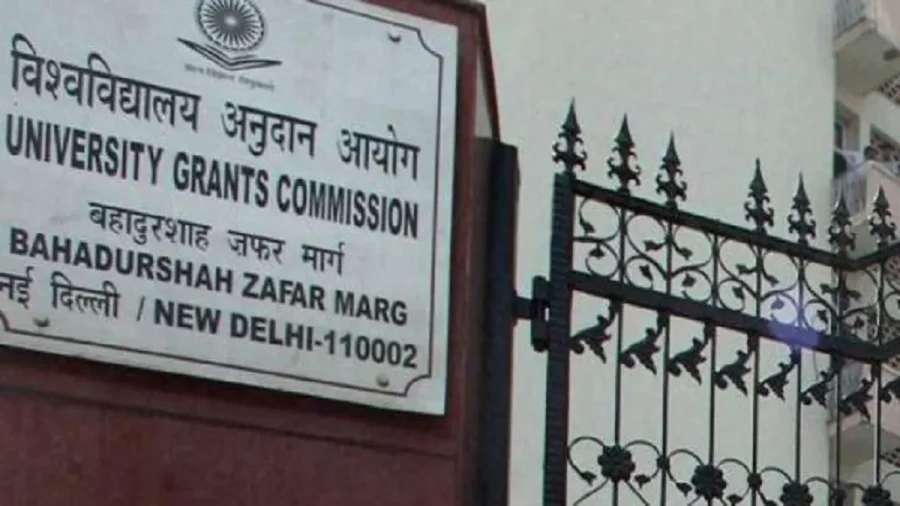
In a firm push for accountability, the University Grants Commission (UGC) has issued show-cause notices to 89 higher education institutions for failing to comply with mandatory anti-ragging regulations. The defaulters include some of India’s most prestigious institutions—17 of which are Institutes of National Importance—including IIT Bombay, IIT Kharagpur, IIT Hyderabad, and IIM Bangalore.
These institutions, despite repeated advisories, failed to submit the required anti-ragging undertakings from students and institutional compliance reports. The lapses have been termed a “significant violation of regulatory norms” by the UGC, raising serious concerns over student safety and campus climate in India’s top educational spaces.
A notice dated June 9, signed by UGC Secretary Prof. Manish R Joshi, has directed all 89 institutions to respond within 30 days by submitting comprehensive compliance reports, securing online anti-ragging affidavits from all students, and detailing both current and planned anti-ragging mechanisms.
If the institutions fail to act within the deadline, consequences may include withdrawal of UGC grants, public disclosure of non-compliance status, and potential derecognition or withdrawal of affiliation.
Among the list of defaulters are the Indian Statistical Institute, Kolkata, AIIMS Raebareli, Aligarh Muslim University, RGIPT Basar, and several National Institutes of Design. The issue becomes even more urgent in light of recent ragging-related incidents and an increasing perception of campus hostility. “Institutions must treat this as a matter of utmost urgency. Your prompt compliance will be essential in upholding institutional responsibility towards student welfare,” reads the UGC’s statement.
Ragging has no place in modern education, especially not in a country positioning itself as a global knowledge leader.
In 2025, with India’s education sector expanding in reach, recognition, and responsibility, compliance with anti-ragging norms shouldn’t require reminders. It should be a given.
As the world watches Indian institutions climb global rankings, student safety and well-being must remain central, not as compliance checkboxes, but as part of the educational culture we aspire to build.
Education
Government Doubles Down on Coaching Centres: New Panel Signals Stronger Regulation Ahead
Published
1 week agoon
June 26, 2025
In a decisive step toward reforming India’s fragmented senior secondary education system, the Ministry of Education has constituted an 11-member high-level committee to address the mushrooming of dummy schools and the unchecked influence of coaching centres. Chaired by Higher Education Secretary Vineet Joshi, the committee includes representatives from CBSE, NCERT, and faculty from IITs in Madras, Kanpur, and Trichy.
The move is seen as part of a growing policy consensus across central and state governments to reclaim the authority of schools, following recent crackdowns and reforms aimed at regulating coaching institutions and curbing the dummy school culture that sidelines holistic education.
Dummy schools — where students are officially enrolled but rarely attend — have emerged as a by-product of India’s competitive entrance exam culture. These institutions prioritise JEE, NEET, and CUET preparation through coaching classes, while students disengage from formal schooling. The CBSE’s March 2025 advisory warning that students from dummy schools could be barred from board exams marked a serious turning point in policy enforcement.
Earlier this year, the Delhi Government carried out inspections in over 600 private schools, issuing notices to at least 10 for running dummy setups. The move followed media reports and parental complaints about students being denied regular schooling in favour of coaching arrangements.
Meanwhile, the Rajasthan Cabinet approved a bill in April 2025 to regulate coaching centres operating in Kota and other education hubs. The legislation aims to curb exploitative practices, mandate mental health counsellors, and prevent coaching centres from operating without a minimum infrastructure standard—prompted by rising student suicides in the state.
Central Framework and Industry Oversight
In February 2025, the Central Government announced a new framework for coaching centres, proposing registration, transparency in fee structures, and guidelines on advertising to prevent misleading claims. Together with the current committee’s formation, these reforms indicate a systematic tightening of oversight at all levels.
The new panel’s mandate is broad. It will investigate:
- The socio-academic reasons behind the rise of dummy schools
- The misalignment between school curricula and competitive exams
- The impact of coaching on student well-being and critical thinking
- The need to promote alternate career pathways beyond engineering and medicine
- Regulations around coaching advertisements and contract practices
A National Rethink on the Purpose of Schooling
Education experts like Dr Ameeta Mulla Wattal have welcomed the initiative, calling it “a vital opportunity to restore the sanctity of school education.” The rise of coaching centres as parallel systems, she noted, has come at the cost of creativity, values, and even mental health in adolescents.
As India contemplates the future of its learners, the Ministry’s recent actions suggest a serious intent to bridge the gap between boardrooms and classrooms. Whether the new committee’s recommendations lead to tangible change remains to be seen, but the signals are clear: education in India must prepare children for life, not just for an entrance exam.
Newsletter

“We Sleep on Walls Here”: Shubhanshu Shukla Talks to Indian Students from Space

A Structural Proposal to Transform School Education in Bihar

NIIT Foundation and YuWaah, UNICEF Launch Free Online Digital Marketing Course for Youth

National Conference Pushes for Common Standards Across School Boards

Maharashtra: Over 8,000 Villages Lack Schools, CCTV Compliance Still Patchy

Haryana to Offer Free After-School Coaching for JEE, NDA Aspirants

Telangana CM Calls for Overhaul of Intermediate Education in Telangana

Indian Astronaut Shubhanshu Shukla to Connect with School Students Live from Space

Are 4-Year Degrees Dead? Nikhil Kamath and the WEF Say Lifelong Learning Is Here to Stay

UGC Cracks Down on 89 Institutes Over Anti-Ragging Failures

Government Doubles Down on Coaching Centres: New Panel Signals Stronger Regulation Ahead

CBSE To Conduct Board Exams Twice for Class 10 from 2026

How to Win Back Wandering Minds: Post-Summer Edition
Tripura Becomes Third Indian State to Achieve Full Literacy

Assam Brings Sign Language to Senior Secondary Classrooms in Landmark Move

Delhi Schools to Implement Age 6 Rule for Class 1 Admissions from 2026

Tripura Adds Sex Education & HIV Awareness to Their Curriculum

Four Indian Schools Shine on the Global Stage at World’s Best School Prizes 2024

Centre Urges 7 States to Consider Common Board Amid Alarming Student Failure Rates

IIT Delhi Leads India in the QS Rankings 2026; MIT Tops Globally

Chandigarh, Punjab Lead in School Education Rankings; Meghalaya Trails Behind

Maharashtra Revises Policy on Third Language in Schools, Hindi No Longer Mandatory

From Academics to Empathy: Redefining Academic Success

India Sends 20 Students to Japan Under Sakura Science Programme 2025

Delhi Schools to Observe June as Anti-Malaria Month, Says DoE

Is Your School Following These Mandatory CBSE Committees?

CBSE’s ‘Sugar Boards’ Initiative: Tackling the Sweet Crisis in Indian Schools
CBSE Warns Dummy School Students May Be Barred from Board Exams

Maharashtra to Regulate Pre-Primary Education with New Law Aligned to NEP 2020

MAHAJYOTI’s Book Distribution Scheme to Empower 7,000 OBC Students Preparing for JEE/NEET & MHT-CET

China Embarks on Ambitious AI-Driven Education Reform to Build a ‘Strong Education Nation’ by 2035

John King’s Book ‘Teacher By Teacher’: A Global Tribute to the Transformative Power of Education

CBSE Introduces Mandatory Bridge Course for Classes 6 to 12 in Chhattisgarh Under NEP 2020

Rewriting Ambedkar: Why Students Must Know the Man Beyond the Constitution

CBSE Mandates 50-Hour Annual Training for Teachers, Declares STEM as 2025 Theme

India Bids Farewell to NEP Architect Dr K. Kasturirangan

Banu Mushtaq’s International Booker Win Is a Wake-Up Call for Indian Schools to Reclaim Literature

Pradhan Mantri Rashtriya Bal Puraskar 2025: Nominations Now Open for India’s Young Achievers

NCERT Class 7 Textbooks Updated: Mughals Removed, Focus on Indian Ethos and Pilgrimage

Delhi Government Cracks Down on Dummy Schooling; Over 600 Schools Inspected, 10 Issued Notices

Delhi Approves Landmark Bill to Regulate School Fees Across 1,677 Institutions

The Ethics of AI Art in Education & Nostalgia: The Ghibli Effect

Operation Sindoor and Operation Abhyaas: Navigating School Safety and Student Well-being Amid Rising Tensions

Harvard Stands Its Ground: Harvard Faces ₹18,400 Crore Funding Freeze After Rejecting Trump Administration’s Demands
CBSE Revises Class 10, 12 Curriculum: Biannual Exams, New Subjects and Flexible Passing Criteria Introduced

CUET-UG 2025 Likely to be Postponed, Fresh Dates Expected Soon

Aalamaram 2025: Where Indian Educators Came Together to Grow, Reflect, and Lead

Trump Signs Executive Order to Promote AI Integration in U.S. K-12 Education

Mizoram Declared First Fully Literate State in India

Indian Students Flock to Singapore, Ireland, and Dubai for Higher Studies: 38% Surge Recorded
SGEF2023 | Special Address by Rama Datt, Trustee, Maharaja Sawai Man Singh II Trust, Jaipur

ScooNews | After Movie | ScooNews Global Educators Fest 2023

Aftermovie | NIES2 UP Chapter | 21 Jan 2023

WEBINAR | Gamification in Education: How Digital Badges Can Boost Student Motivation and Engagement

ScooNews | WEBINAR| Importance of Physical Activity for Children at School | Plaeto

SCOONEWS | WEBINAR | WHY DIGITIZING YOUR SCHOOL IS A MUST | TEACHMINT

Keynote Address | Lakshyaraj Singh Mewar

Anurag Tripathi, Secretary, CBSE at SGEF2022

How schools can nurture every student’s genius

Aftermovie | SGEF2022 | Jaipur

Li Andersson | Minister of Education | Finland

Anurag Tripathi, Secretary, Central Board of Secondary Education (CBSE) discusses NEP2020

ScooNews | Early Ed Asia 2019 | Aftermovie
#PodarECEconf : Pursuing quality ECE

#CBSE Class XII #Results #Highlights

The interesting story of India’s educational system | Adhitya Iyer

A young scientist’s quest for clean water

The Danger of Silence: Clint Smith

National Digital Library of India is an initiative by HRD Ministry

Remembering Kalpana Chawla on her birthday!

Message from Sadhguru for Students!
Message from Sadhguru for Students!

The Untapped Genius That Could Change Science for the Better

Eddy Zhong: How school makes kids less intelligent TEDxYouth@Beacon

#TEDxCanberra : What if every child had access to music education…
Trending
-
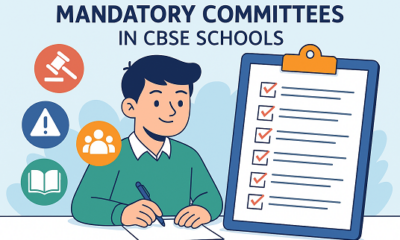
 Education3 months ago
Education3 months agoIs Your School Following These Mandatory CBSE Committees?
-

 Education2 months ago
Education2 months agoCBSE’s ‘Sugar Boards’ Initiative: Tackling the Sweet Crisis in Indian Schools
-
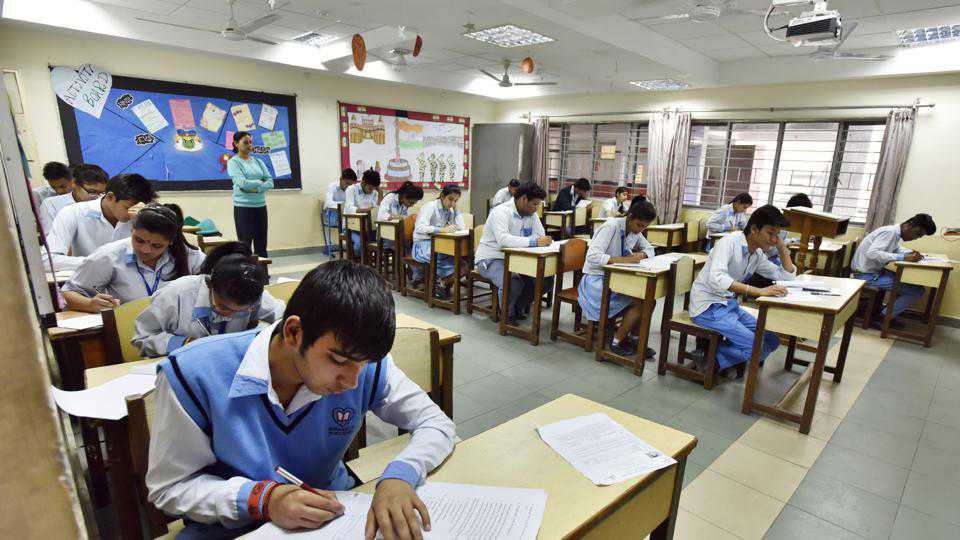
 News3 months ago
News3 months agoCBSE Warns Dummy School Students May Be Barred from Board Exams
-
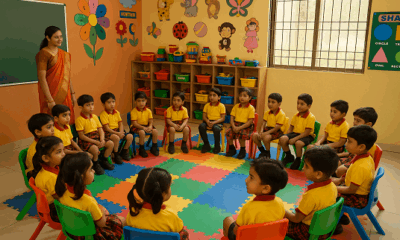
 Education2 months ago
Education2 months agoMaharashtra to Regulate Pre-Primary Education with New Law Aligned to NEP 2020
-

 Education3 months ago
Education3 months agoMAHAJYOTI’s Book Distribution Scheme to Empower 7,000 OBC Students Preparing for JEE/NEET & MHT-CET
-
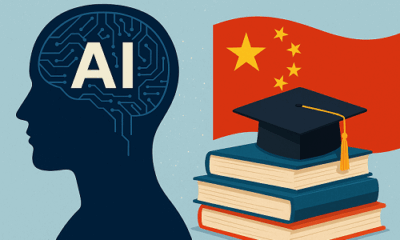
 Education3 months ago
Education3 months agoChina Embarks on Ambitious AI-Driven Education Reform to Build a ‘Strong Education Nation’ by 2035
-
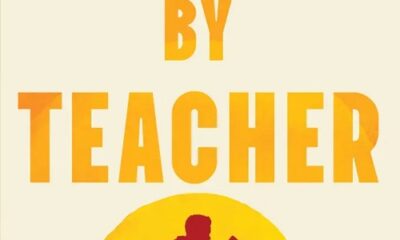
 Education2 months ago
Education2 months agoJohn King’s Book ‘Teacher By Teacher’: A Global Tribute to the Transformative Power of Education
-
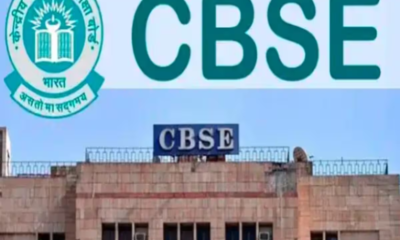
 Education3 months ago
Education3 months agoCBSE Introduces Mandatory Bridge Course for Classes 6 to 12 in Chhattisgarh Under NEP 2020
-
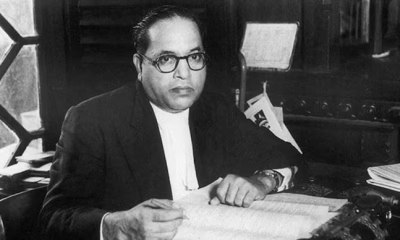
 Education3 months ago
Education3 months agoRewriting Ambedkar: Why Students Must Know the Man Beyond the Constitution
-
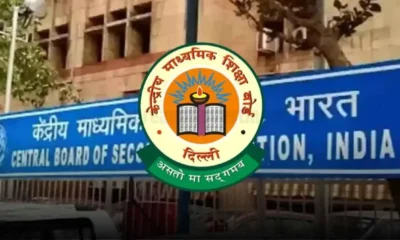
 Education3 months ago
Education3 months agoCBSE Mandates 50-Hour Annual Training for Teachers, Declares STEM as 2025 Theme





